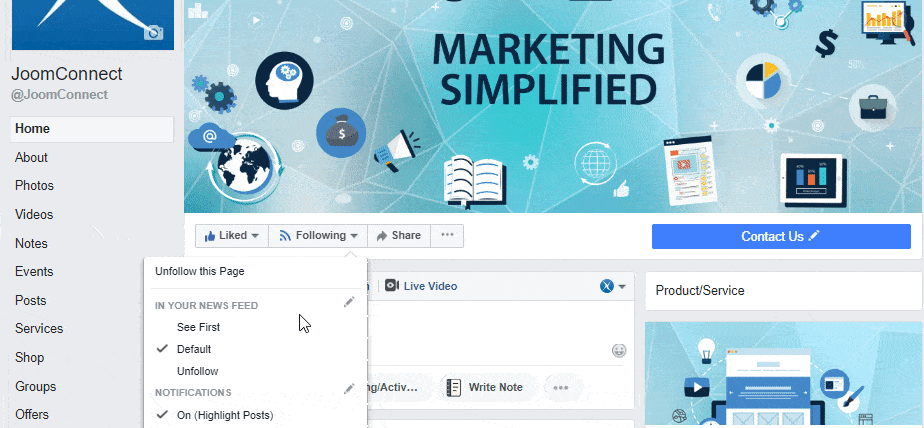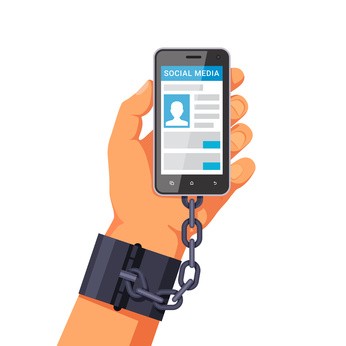JoomConnect Blog
Will This Pushback Against Social Media Hurt Your Marketing?
I’m sure you’ve been to dinners with friends and family whom you haven’t seen in a long time, and EVERYONE, young and old, is glued to their cell phones and not really fully present. Instead, they’re busy taking pictures of their food, shooting short video snippets, and snapping pictures of the event - all for social media.
It’s become such a common occurrence in today’s society. Approximately 30% of all time spent online is now on social media, and the average person spends about 2 hours a day on Facebook, YouTube, Snapchat, Instagram, and Twitter - that time not including other social media platforms. That number is even higher for teenagers, who spend approximately 9 hours a day on average using the various social media channels.
Part of this is due to the addictive nature of social media. The Fear of Missing Out syndrome takes over, and users need to make sure that they stay up-to-date on the latest news and online gossip. And, when they stay informed about these things or receive ‘likes’ and ‘comments’ on their posts, they are positively reinforced through the increased dopamine levels in their brains. This strengthens their addiction.
Excessive time spent on social media can be detrimental to a person’s physical and mental health. People who use social media too much will have problems sleeping, weight gain, problems focusing in school and work, anxiety, depression, low self-esteem, and loneliness. It can also be dangerous: those addicted may be tempted to access social media while driving and cause fatal crashes.
The Center for Human Technology (CHT) has decided to take on social media through the Time Well Spent Movement in hopes to combat this addiction. And, the pressure they are putting on these social media platforms to address the problems they are supposedly causing has actually started to bring about some change.
What Social Media Platforms are Doing
Facebook is posed to roll out a “Your Time on Facebook” activity dashboard which will allow users to track the amount of time they spend on the platform. This dashboard will allow users to see how much time they spend per day, set daily reminders to close the app after using it for a set amount of time, and to mute push notifications for a period of time. This dashboard will be rolled out to Facebook-owned Instagram with similar features. Instagram has already opted to include an “You’re All Caught Up” message so users are aware when they have viewed all new posts that have occured within the past 48 hours.
Even YouTube has started to tackle this issue. Their mobile app includes a ‘Watch History’ screen that will track how much time the user spends on the app, as well as give users an option to set a timer that reminds them to take a break.
So...What Should You Do?
All of this probably sounds pretty scary from the perspective of your business. People spending less time on these social media platforms means that your company will have fewer opportunities to connect with your audience on social media.
Thankfully, the Time Well Spent Movement doesn’t seem to be having any immediate effects on social media usage amongst users, meaning that your social media marketing shouldn’t be affected by this. If anything, your social media marketing is poised to become even MORE valuable as the younger generation starts to enter the workforce and gain decision making power.
But, if this movement does take off and the use of social media decreases, here are some ways to save your social media marketing:
- Create Good Posts: Due to the algorithms used by social media platforms, your posts that receive more engagement will be more likely to show up in the feeds of your followers. Make sure that all of your posts include visual content (pictures or video), discuss topics that your audience would be interested in, and encourage conversation in the comments.
- Optimize Your Post Times: There are certain times where more people tend to use social media. Do your research and determine the best times to post for each of the platforms that you are on.
- Boost Your Posts: Boosting your posts better ensures that your chosen audience will see your posts in their feed, even if they are using these platforms for a shorter period of time.
- Run Campaigns: Campaigns, like boosting, help your posts be seen by a larger audience. Campaigns can give you further insight into your target audience, allowing you to create content more tailored to their interests.
- Encourage ‘Notification’ Following: Many platforms give individuals the option to do more than just follow a page. Facebook, for example, offers different Following options so users can choose to see a page’s posts first in their feed, or even receive notifications in Standard Format (all notifications, up to 5 per day) or Highlights (notifications about suggested posts from the page). You can run a campaign encouraging your followers to do this so they don’t miss out on any important news from you, while explaining how to set this up.

And, if you need further help gaining traction on social media, JoomConnect can help make sure that you’re doing the right thing, whether it involves creating informative engaging content for you, or helping you run a Facebook Campaign. Reach out to us today.




Comments